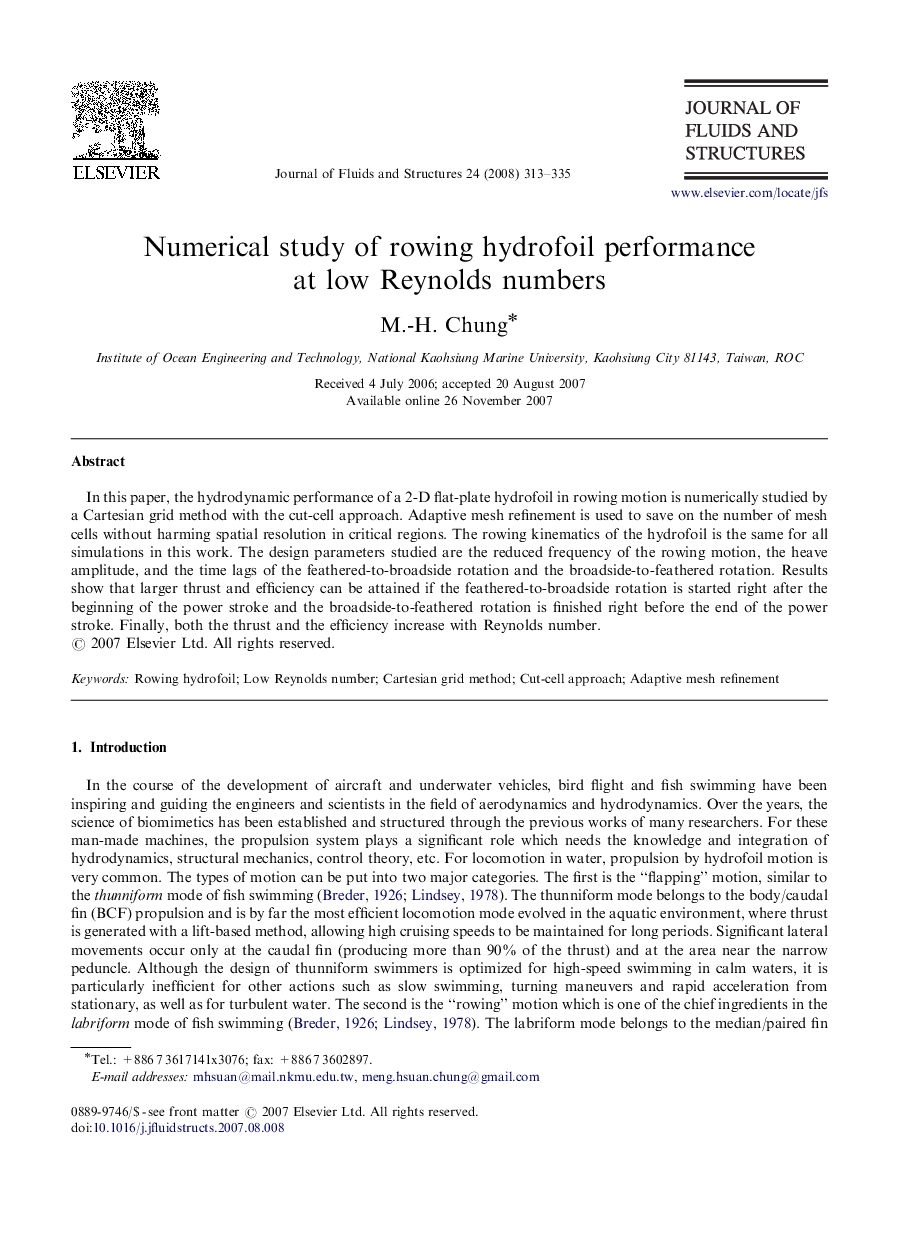| Article ID | Journal | Published Year | Pages | File Type |
|---|---|---|---|---|
| 794518 | Journal of Fluids and Structures | 2008 | 23 Pages |
In this paper, the hydrodynamic performance of a 2-D flat-plate hydrofoil in rowing motion is numerically studied by a Cartesian grid method with the cut-cell approach. Adaptive mesh refinement is used to save on the number of mesh cells without harming spatial resolution in critical regions. The rowing kinematics of the hydrofoil is the same for all simulations in this work. The design parameters studied are the reduced frequency of the rowing motion, the heave amplitude, and the time lags of the feathered-to-broadside rotation and the broadside-to-feathered rotation. Results show that larger thrust and efficiency can be attained if the feathered-to-broadside rotation is started right after the beginning of the power stroke and the broadside-to-feathered rotation is finished right before the end of the power stroke. Finally, both the thrust and the efficiency increase with Reynolds number.
